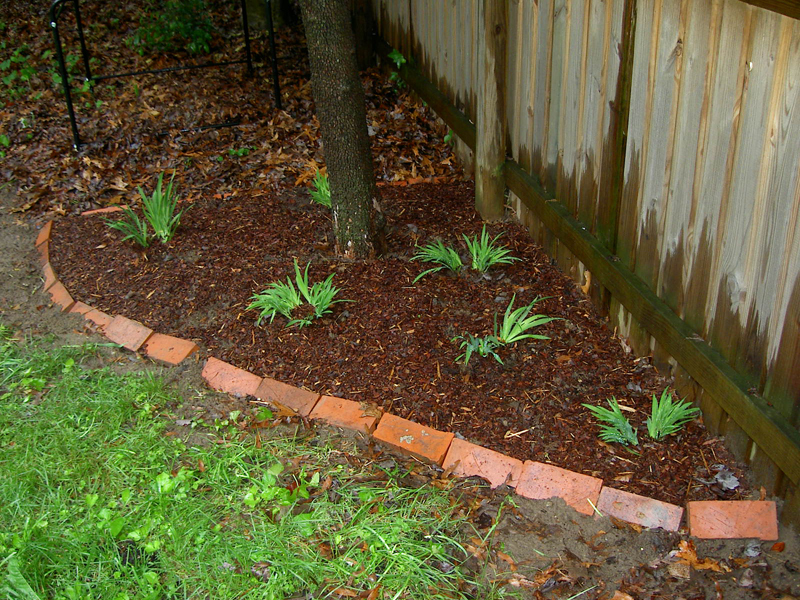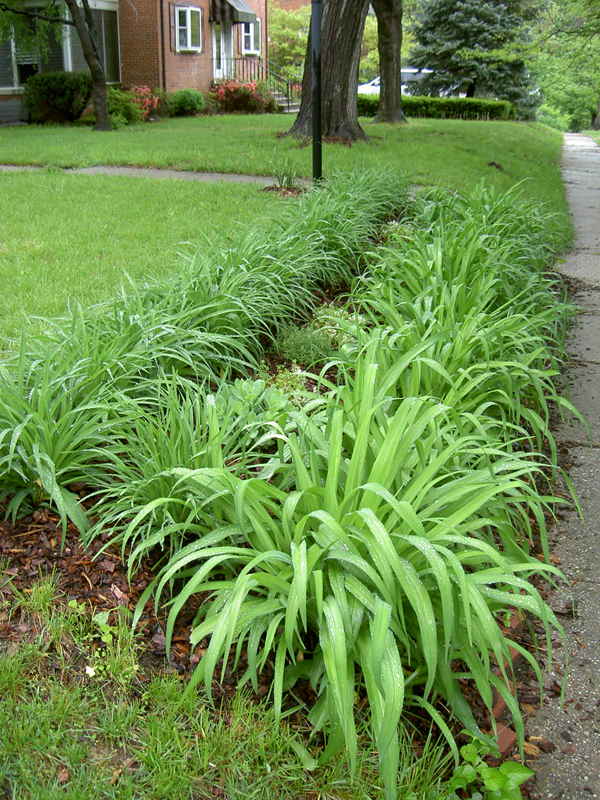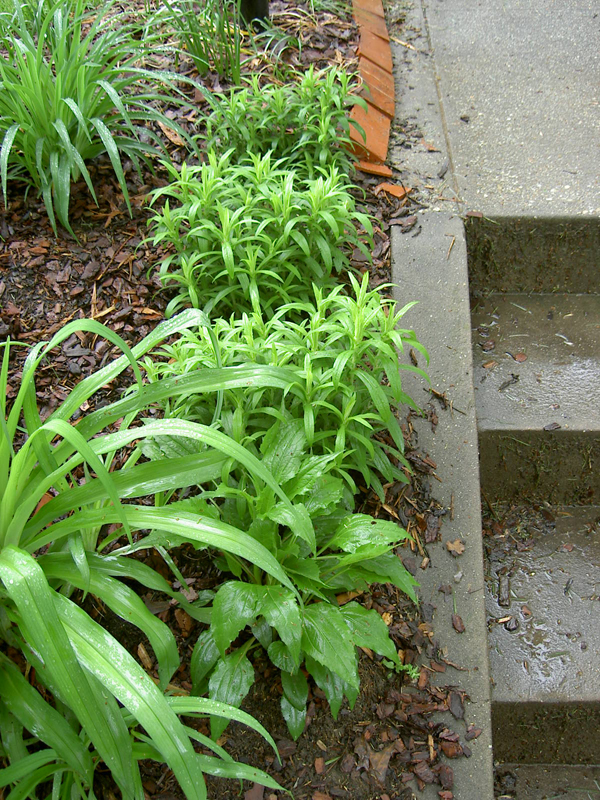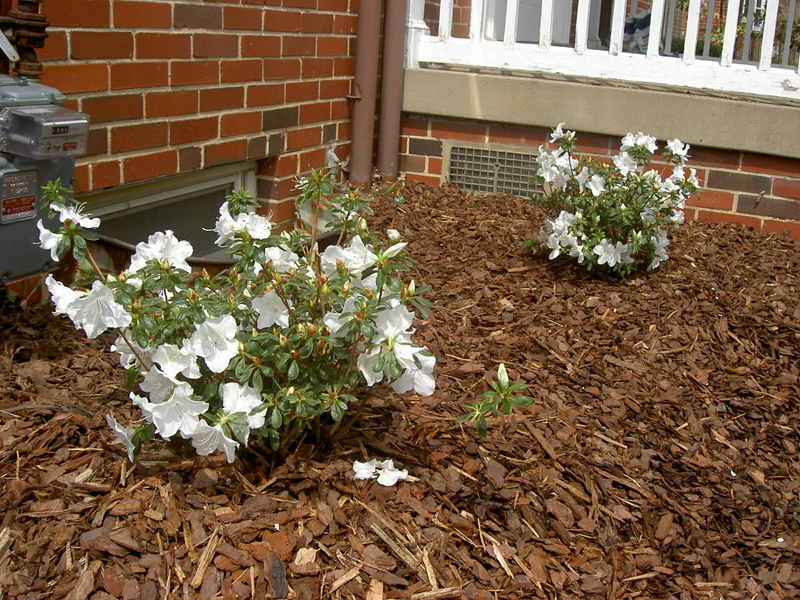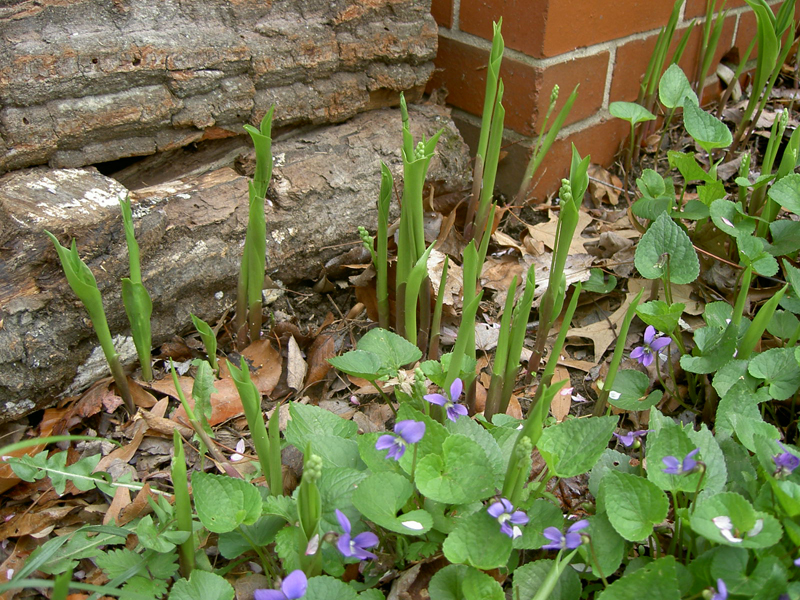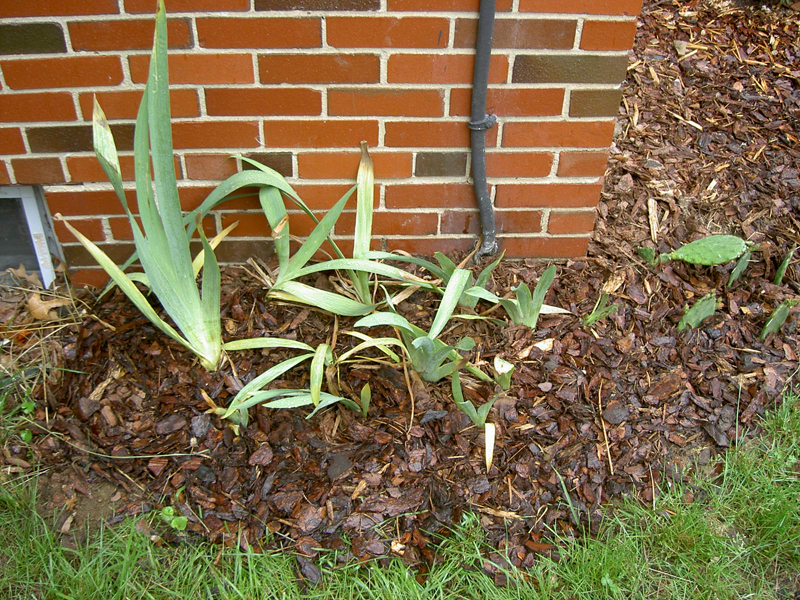
The new mini-bed of irises and prickly pear.
In keeping with my efforts to preserve all the plants I find around my yard, I volunteered to provide homes for any leftovers from the town’s annual plant exchange. I arrived home on Sunday evening to find bags of plants on the porch: bluebells, irises, prickly pear cactus, chives. The next day I cleared the grass from the front corner of the house to create a small bed that should get sun almost all day long. Into that bed, following the removing of roots and the mixing in of humus, I planted the irises. I love irises, and hope to someday have them all over the yard in various shapes, sizes, and colors. For now I will content myself with these refugees, as nearly all of the places I might plant irises, in particular the south facing wall of the garage, have several years to go before they’ll be suitable locations. Which is to say: they’re all completely overgrown with honeysuckle and the like at the moment.
Next to the irises, in some sandy soil that I did not enrich with humus, I planted a few pieces of the prickly pear. I look forward to seeing how it does there, and I hope that it won’t eventually grow so large as to prevent the gas company from reading the meter. I’m told they now have laser readers that can be used from a distance, but we’ll see. The chives I planted near the lavender at the corner of the porch, and the bluebells I passed along to my neighbor. We have bluebells in our yard already, and I’m still deciding where I’ll move them. I keep talking about moving them to the base of the maple tree in the front, but that seems like work, all that adding soil around the tree and digging up from around the rosebush and transplanting. At any rate, it hasn’t happened yet, and I decided that bluebell refugees I had aplenty. I also passed along some pachysandra, a ground cover of which another neighbor is very fond. So, our block did well from the plant exchange!

The clump of spiderwort that emerged from the swath of liriope last year.
One of the funny little surprises of our yard has been the clump of spiderwort that appeared last year seemingly out of nowhere. It’s not hard to believe that it’s been dormant under the carpet of liriope for years, but how many years is the question that fascinates us. Spiderwort appears to be native to this area, and I’ve seen it in beds around town. It’s not the most elegant plant on the planet—its spiky leaves flop all over each other and the somewhat delicate flowers get a bit lost in the foliage—but it’s a lovely deep purple and it blooms for a long time. I haven’t decided where I’ll move it; I suspect it’s destined for one of the many beds that live only in my imagination. In the meantime, I’ve cleared a little space around it and am letting it be.
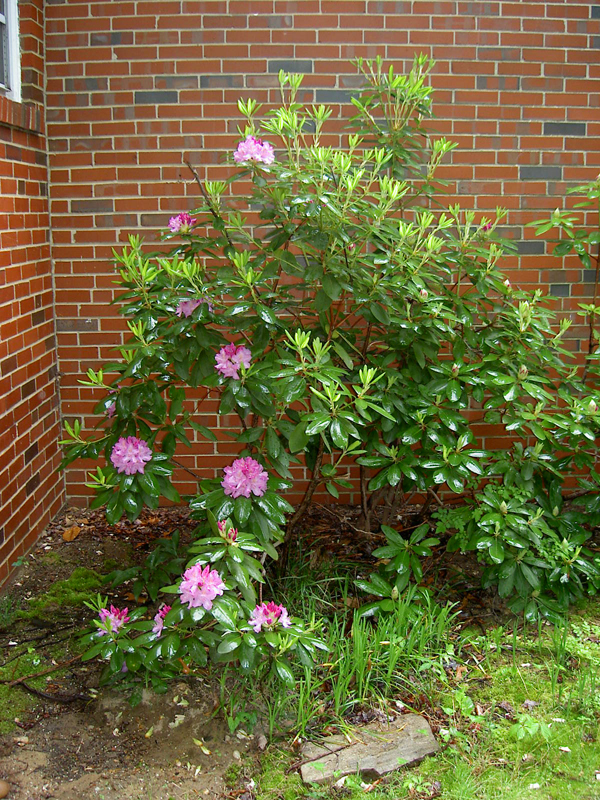
The rhododendron, taking off this year.
Another plant that is creating somewhat of a quandary for us is the large rhododendron at the back of the house. On the one hand, we hate it. My partner is allergic to rhododendrons, so we’ve spent years developing a fierce dislike of the plant. Plus, it’s pink, and I’m already struggling to accept the roses, peonies, and azaleas in all their pink glory. It’s also smack in the spot that is destined to be the patio or screen porch: the one that also lives only in my imagination. As such, we’ve been trying to offer the plant to friends and neighbors alike to no avail. On the other hand, it’s a lovely plant and is likely nearly as old as our parents. After several years of neglect and poor weather—it allegedly used to be taller than the single-story addition—it’s growing and putting out all kinds of blooms. Having gotten no takers on our offers to pass it along to a yard where it will be loved and cherished rather and cursed and reviled, we’re starting to become fond of it in our own hateful way. It’s possible that when we do finally move it, it will be to another location in our own yard.

Our original peony plant, putting out all kinds of buds after having last year’s choking weeds cleared from around it.
Finally, the plant that has been the best gift of the yard is the peony. Tucked away near the back fence, it was completely choked with vines and weeds when we moved in. Last spring we cleared most of the weeds away from its base, and it produced quite a few blooms. We also received some refugee peonies from our neighbors down the road, and they seem to have mostly survived; I think we lost the smallest in the drought. It looks like we’ll get one flower from them, which is more than I expected, but they’ve all put up shoots and look to be photosynthesizing away.
It appears that luck is with me, as it will be raining for the next few days, creating perfect weeding weather: cool with nice soft soil. I am determined to make major progress on the backyard over the next couple of weeks, while it’s still arguably spring. I have no desire to repeat last year’s experience of trying to eradicate weeds that had settled in for the long haul at the height of the summer. I remind myself that we’re making enormous progress, and the photo record certainly helps to keep that clear. So, next week I hope to be reporting that I finally planted out those poor little crested irises I’ve had sitting on the porch for weeks!
